After upgrading my GPU, I noticed performance drops when temperatures hit 85°C. It caused stuttering and lag, so I added better cooling. Keeping it below 80°C fixed the issues and improved performance.
A GPU temperature above 85°C is considered bad. Prolonged heat above this can cause thermal throttling, reduced performance, and potential damage. For optimal performance, try to keep your GPU between 60°C and 80°C, depending on the model.
What temperature is bad for GPU? Overheating can lead to poor performance and damage. Learn the ideal temperature range, signs of overheating, and how to keep your GPU cool in this article!
Ideal GPU Temperature Range:
The ideal GPU temperature range is between 60°C and 80°C for most GPUs. Temperatures above 85°C can lead to performance drops and potential damage over time.
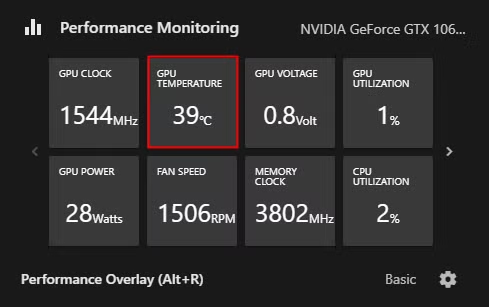
1. AMD GPUs:
AMD GPUs can handle temperatures up to 110°C, but it’s best to keep them between 65°C and 85°C during gaming for optimal performance.
2. Nvidia GPUs:
NVIDIA GPUs perform best between 60°C and 80°C, with a maximum limit of 93°C to 95°C. Staying in this range ensures smooth operation and longevity.
Also Read: Is 60 Degrees Celsius Hot For A GPU – Keep Your GPU Cool!
What Temperature Is Too Hot For A GPU?
The “too hot” temperature depends on the GPU manufacturer and model. Here’s a breakdown:
1. NVIDIA GPUs:
NVIDIA GPUs typically have a maximum operating temperature of 93°C to 95°C. If your GPU consistently runs close to these numbers, it’s a red flag.
2. AMD GPUs:
AMD GPUs, especially modern models, are designed to handle higher temperatures. Many AMD cards can reach up to 110°C before triggering throttling or shutdown. While these cards can technically withstand such heat, running them at these temperatures regularly is not recommended.
What Happens When A GPU Overheats?
When a GPU exceeds its safe operating temperature, several issues can occur:
1. Thermal Throttling:
GPUs are designed to protect themselves by reducing performance when temperatures get too high. This process, called thermal throttling, lowers clock speeds to reduce heat, resulting in:
- Slower gaming performance
- Stuttering in graphics-intensive applications
2. System Instability:
Extreme overheating can lead to crashes, freezes, or graphical artifacts like screen tearing and flickering.
3. Component Damage:
Prolonged exposure to high temperatures can degrade internal components, such as the GPU die, VRAM, and capacitors, shortening the GPU’s lifespan.
Why Keeping Track Of GPU Temperature Matters?
1. Thermal Throttling:
When your GPU reaches dangerously high temperatures, it may throttle its performance to avoid damage. This means it reduces its speed, which can lead to lower frame rates or slower processing times.
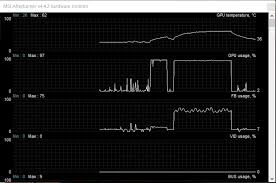
2. Permanent Damage:
Prolonged exposure to excessive heat can damage the internal components of the GPU, shortening its lifespan and potentially rendering it useless.
3. System Instability:
High temperatures can cause your system to become unstable, resulting in crashes, freezes, or errors.
Signs Your GPU Is Too Hot:
If your GPU temperature is approaching dangerous levels, you may notice:
- Loud fan noise as cooling systems work harder
- Reduced frame rates or lag during games
- Graphical glitches or artifacts
- Unexpected PC shutdowns
How To Monitor GPU Temperature?
Monitoring GPU temperature is essential to catch overheating early. Here are some tools you can use:
1. Software Options:
- MSI Afterburner: Offers real-time temperature tracking and customization for fan curves.
- HWMonitor: Tracks GPU, CPU, and other hardware temperatures.
- NVIDIA GeForce Experience or AMD Radeon Software: Built-in utilities for monitoring and optimizing GPU performance.
2. In-Game Overlays:
Some games and platforms, like Steam or GeForce Experience, provide real-time temperature stats during gameplay.
How To Prevent Your GPU From Overheating?
Maintaining a cool GPU is key to avoiding performance and hardware issues. Here’s how you can achieve this:
1. Ensure Proper Airflow:
- Use a PC case with good airflow design.
- Position intake and exhaust fans to optimize heat dissipation.
2. Regularly Clean Your PC:
- Dust your GPU and case interiors every 3-6 months.
- Use compressed air to clean hard-to-reach areas like heatsinks and fans.
3. Upgrade Cooling Solutions:
- Replace the stock GPU cooler with an aftermarket cooler for better performance.
- Consider using liquid cooling for high-end GPUs.
4. Avoid Overclocking Without Proper Cooling:
- If overclocking, ensure your cooling setup can handle the extra heat.
5. Reapply Thermal Paste:
- Reapply thermal paste every 2-3 years to improve heat transfer.
Also Read: PS5 GPU Equivalent – Find Your GPU Match Now!
When To Consider GPU Replacement?
If you’ve tried all the steps above and your GPU still overheats, it might be time to replace it. Look for these signs:
- Consistently high temperatures even after cleaning and maintenance.
- Frequent crashes or shutdowns due to overheating.
- Aged GPU that struggles with modern games or workloads.
What Temperature Is Too High For My GPU And CPU?
A GPU temperature above 85°C and a CPU temperature above 80°C are generally considered too high. These levels can lead to performance drops, system instability, or hardware damage. While GPUs and CPUs have maximum limits (usually 95–110°C), staying below these thresholds ensures better performance and extends component lifespan.
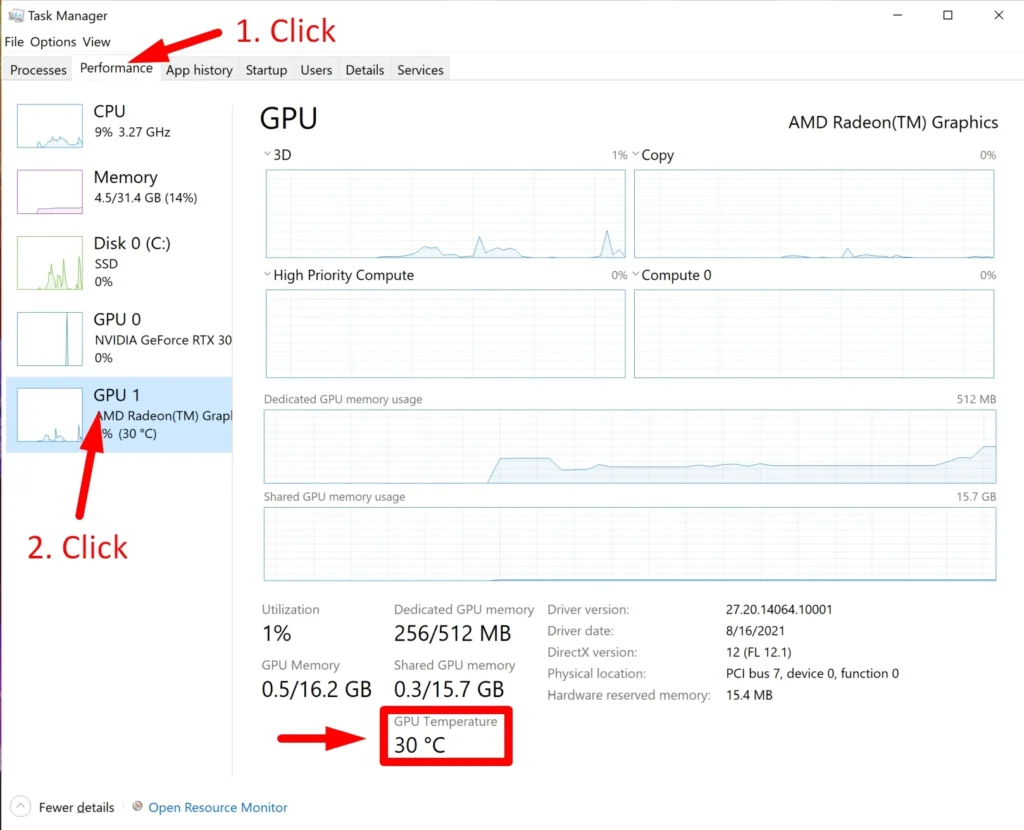
What GPU Temps Are Considered “Safe”?
Safe GPU temperatures during gaming or heavy use typically range from 65°C to 85°C for most GPUs. For NVIDIA cards, staying below 80°C is ideal, while AMD cards can handle slightly higher, up to 85°C. Consistently exceeding 90°C risks performance issues, reduced lifespan, or damage, so good cooling is essential.
What Temperature Is Bad For GPU?
A GPU temperature above 85°C is considered bad. It can cause performance issues like stuttering and lag due to thermal throttling. Prolonged exposure to high temperatures may damage components and shorten the GPU’s lifespan. Keeping temperatures between 60°C and 80°C ensures smooth performance and prevents overheating problems.
What Should Be The Normal GPU Temp While Gaming?
The normal GPU temperature while gaming is typically between 65°C and 85°C. For NVIDIA GPUs, staying within 60°C to 80°C is ideal, while AMD GPUs can safely operate up to 85°C. Keeping your GPU within this range ensures good performance and avoids overheating, which can cause throttling or hardware issues.
Is 80-83degrees OK For A GPU While Playing?
Yes, 80-83°C is generally safe for most GPUs while gaming, especially under heavy load. It’s within the acceptable range for both AMD and NVIDIA cards. However, if the temperature consistently exceeds this, consider improving airflow, cleaning your system, or upgrading cooling to prevent long-term performance issues or hardware damage.
What Is Considered Unsafe Temperature For GPU And CPU?
Unsafe temperatures for GPUs are generally above 85°C, with critical levels at 95–110°C, depending on the model. For CPUs, unsafe temperatures start above 80–90°C, with critical limits around 100°C. Sustained high temperatures can cause thermal throttling, system crashes, or permanent damage, so proper cooling is essential to avoid issues.
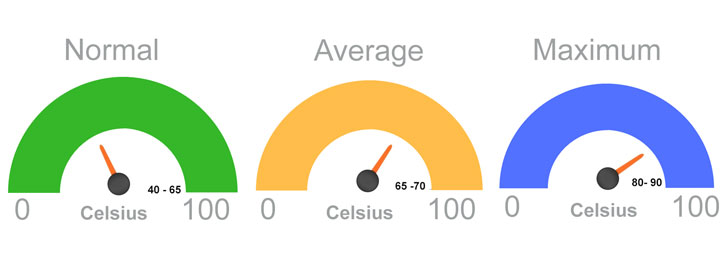
How Hot Can A GPU Run Without Damage?
A GPU can typically run safely up to 85°C under load without damage. For NVIDIA, the maximum is 93–95°C, while AMD GPUs can reach 110°C. However, prolonged exposure to high temperatures can reduce performance and lifespan. Keeping your GPU cooler, ideally between 60°C and 80°C, ensures better health and performance.
Also Read: Can You Use AMD GPU With Intel CPU – Complete Guide 2024!
How Hot Is Too Hot?
A GPU is considered too hot when its temperature exceeds 85°C for AMD or 80°C for Nvidia cards. At these levels, performance can suffer due to thermal throttling, and prolonged exposure may damage the GPU, reducing its lifespan. Keeping temperatures below these thresholds is crucial for safe operation.
For more info check out this Quora discussion: My GPU Is 115 And CPU 120 Both Temps Are F.
Does Using Multiple Monitors Increase GPU Temperature?
Yes, using multiple monitors can increase GPU temperature. When connected to multiple displays, the GPU has to work harder to render content across each screen, especially during gaming or intensive tasks. This extra workload can generate more heat, causing the GPU to run hotter compared to using a single monitor.
Is 80 C Too Hot For GPU?
An 80°C temperature for a GPU is generally safe during heavy usage like gaming. However, it’s on the higher end of the safe range. To maintain performance and longevity, it’s best to keep the temperature between 65°C and 75°C. Regular monitoring and cooling improvements can help avoid overheating.
Is 70 C Too Hot For A GPU?
No, 70°C is not too hot for a GPU. It is within the safe operating range for most GPUs, including both AMD and Nvidia models. However, consistently running at 70°C during heavy tasks like gaming is fine, but it’s always good to monitor and ensure cooling is adequate.
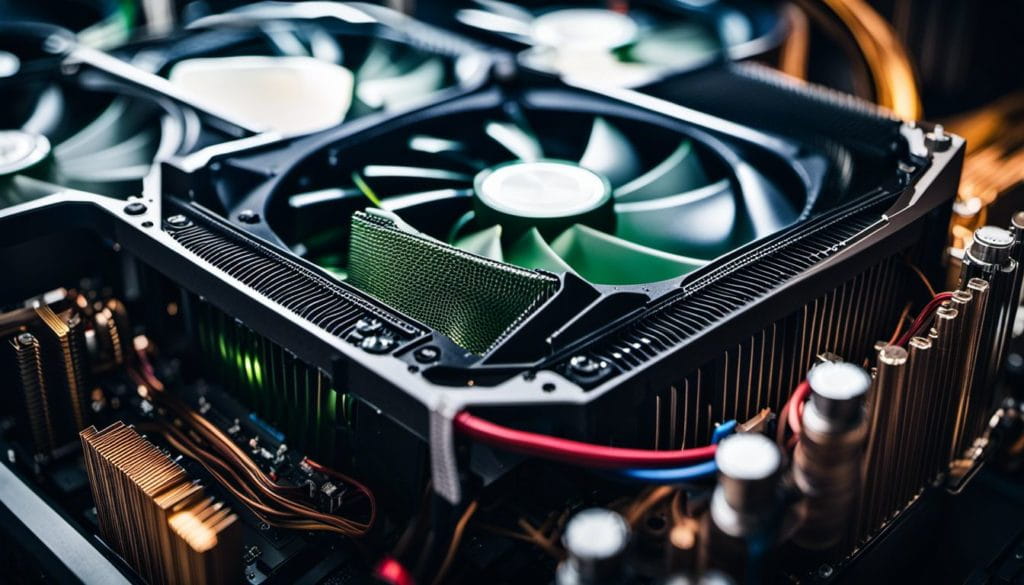
What Is A Risky GPU Temperature?
A risky GPU temperature is when it exceeds 85°C. At these levels, the GPU may start to throttle its performance to avoid damage. Prolonged exposure to high temperatures can cause permanent damage to internal components, leading to reduced lifespan, crashes, and system instability. Keeping temperatures under control is crucial.
Is 90 Degrees Celsius Hot For A GPU?
Yes, 90°C is considered hot for a GPU. While some GPUs, like those from AMD, can handle temperatures up to 110°C, running consistently at 90°C can lead to thermal throttling, performance drops, and long-term damage. It’s best to keep the GPU temperature below 85°C for optimal performance and lifespan.
Is It Normal For A GPU To Get Hot During Gaming?
Yes, it’s normal for a GPU to get hot during gaming because it works harder to render graphics. Temperatures between 60°C and 85°C are common and safe. However, if the GPU temperature exceeds 90°C regularly, it may indicate cooling issues and could affect performance or lifespan.
Also Read: Red Light On GPU When Pc Is Off – Don’t Panic, Check This Now
Do Different GPUs Have Different Temperature Limits?
Yes, different GPUs have different temperature limits based on their brand and model. For example, AMD GPUs can tolerate higher temperatures, up to 110°C, while NVIDIA GPUs typically max out at 93°C to 95°C. Always check the manufacturer’s specifications for the ideal temperature range for your specific GPU.
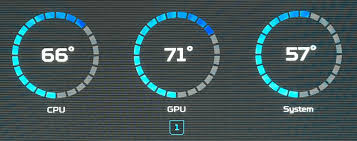
FAQs:
1. What Happens If My GPU Gets Too Hot?
If your GPU gets too hot, it can reduce its performance (thermal throttling), shorten its lifespan, or even cause system crashes and damage to components.
2. How Can I Tell If My GPU Is Overheating?
You may notice performance drops, system crashes, loud fan noise, or visual glitches like screen artifacts. Using temperature monitoring software is the best way to check.
3. Is It Safe To Run A GPU At 85°C For Long Periods?
Running a GPU at 85°C is generally safe for short periods, but prolonged exposure can reduce its lifespan. It’s better to keep it in the 65–75°C range for AMD and 60–80°C for Nvidia GPUs during normal use.
4. Do All GPUs Have The Same Safe Temperature Range?
No, the safe temperature range varies by manufacturer and model. Always check the specifications provided by the GPU manufacturer.
5. Can Dust Make My GPU Overheat?
Yes, dust buildup can block airflow and reduce cooling efficiency, causing your GPU to overheat. Regular cleaning can help prevent this.
6. Should I Worry If My GPU Briefly Hits 90°C?
Brief spikes to 90°C may not cause damage, but consistently high temperatures can harm your GPU. It’s important to investigate and address the cause.
7. What Is The Maximum Temperature Limit For Most GPUs?
For Nvidia GPUs, it’s usually around 95–100°C, while for AMD GPUs, it’s 90–100°C. Exceeding these limits can cause damage.
8. Does Overclocking Make My GPU Run Hotter?
Yes, overclocking increases power consumption and heat generation. Proper cooling is essential to prevent overheating during overclocking.
9. How Does Ambient Room Temperature Affect My GPU?
Higher room temperatures can make it harder for your GPU to stay cool, especially if your cooling system isn’t efficient. Keeping your PC in a cool, well-ventilated area helps.
10. What’s The Best Way To Lower My GPU’s Temperature?
Improving case airflow, cleaning fans, reapplying thermal paste, and upgrading cooling systems are effective ways to lower GPU temperatures.
Conclusion:
In conclusion, maintaining your GPU temperature below 85°C is crucial for optimal performance and longevity. Temperatures above this can cause thermal throttling, instability, and potential damage to your GPU. Regularly monitor temperatures, ensure good airflow, and clean your system to keep your GPU running smoothly and prevent overheating, ensuring better gaming and work performance.
Related Posts:
- Is 60 Degrees Celsius Hot For A GPU – Keep Your GPU Cool!
- What Should GPU Temp Be While Gaming – Keep GPU Cool Now!
- Is CS2 CPU Or GPU Intensive – Find Performance Balance!
- CPU GPU Bottleneck Calculator – Find Bottleneck Issues Now!
Henry Smith is a GPU expert with over five years of experience in GPU repair and troubleshooting. As the founder and lead writer of Techicores.com, he provides clear and practical advice on graphics cards to help readers solve problems and make smart upgrade decisions. His passion for hardware and commitment to quality have made Techicores a trusted resource for tech users worldwide.

